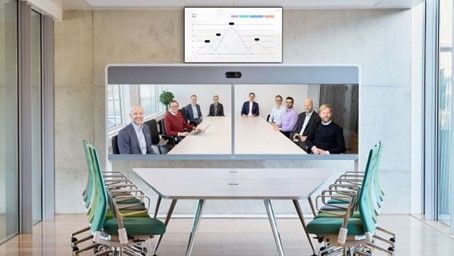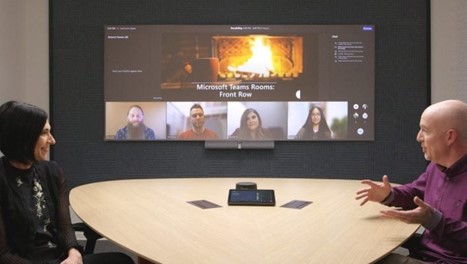After almost three years of not being able to gather in person, Enterprise Connect 2022, the enterprise communications event of the year, enjoyed a resounding comeback in Orlando, Florida.
The conference featured industry analysts, consultants, subject matter experts, and end-users for four days of keynotes, panel sessions, and peer discussions on various issues.
The event covered some key themes and emerging new trends – with hybrid work and next-generation unified communications not surprisingly at the pinnacle of the Hot Topics list.
Elevating the Customer Experience (CX)
A key topic that generated excitement and attention at Enterprise Connect was the innovation in the customer engagement and customer experience space. Poor customer service is one of the biggest killers of businesses, resulting in nearly $75 billion in lost revenue each year in the United States alone.
As enterprises migrate UC and contact center infrastructures to the cloud, many cloud-based providers suggest that UCaaS and CCaaS should be a single cloud-based service. The ultimate vision is where agents, knowledge workers, supervisors, and customers can use voice, video, or text to collaborate and solve customer issues.
Attendees saw technology demonstrations and heard about the latest and greatest AI capabilities, including natural language processing, agent assist, conversational AI, sentiment analysis, enhanced analytics tools, and much more.
In today’s high-tech world, customers demand fast, seamless, convenient, and value-added experiences from the organizations they deal with. In fact, 93% of customer service teams say that customer expectations are at an all-time high. If customer experience is the lifeblood of any business, then a great customer experience is at heart. Success depends on unified communications and contact center technology being fully functional – 100% of the time.
Learn more about validating customer experience.
Optimizing Hybrid Work
The most prominent phrase bandied around by all keynote speakers throughout the sessions this year was ‘hybrid work,’ with the subtext of making communication and collaboration equally accessible and inclusive for those working remotely as those working in the office.
Ensuring video meeting equity and inclusivity
Since the pandemic put a sudden end to in-person meetings, enterprise organizations have had to find ways to adapt to a remote way of working. And video is now a crucial factor in every organization’s hybrid playbook.
Video meetings had the effect of ‘equalizing’ all attendees, even though camera angles were often wrong and video quality varied. But with every meeting attendee appearing in the same-size box in a gallery view, everyone had a consistent meeting experience.
Now, as offices slowly reopen and some employees return to in-person environments in some capacity, businesses are reviewing their workplace culture to ensure that employees retain that feeling of equality.
New offerings from key players
Microsoft, Cisco, Zoom, and RingCentral featured their latest offerings for the new hybrid workforce and workplace with the emphasis firmly on providing equally accessible and inclusive experiences for remote and in-office participants.
Cisco showed off its ability to allow remote participants to see everyone individually, even if they’re all sitting together in a conference.

Microsoft demonstrated its Front Row screen layout to provide a better sense of connection with attendees.

RingCentral launched a new AI-based feature that allows users to access multiple meetings with meeting summaries and auto-generated short-form summaries, video highlight reels, and keywords.
Zoom introduced video messaging for Zoom Chat to enable the recording and sending video messages within Zoom Chat.
Creating the ideal hybrid working plan
Another key theme was the evolution of the ‘hybrid working plan.’ As enterprises put their hybrid work strategies into action, the question arises as to how to match and integrate technologies with their evolving hybrid working culture.
Many enterprises must reconsider what the fundamental purpose of the office is, and the answer will be unique for each organization. To succeed, each work environment must align with that enterprise’s culture.
There’s a lot that IT teams must consider to achieve agility in a world of legacy hardware, dispersed software, and cloud-powered digital technology.
Adapting to a digital-physical world
Bringing the outside into the office and taking the inside out of the office requires a vast amount of technological juggling. The nature of hybrid working means that in-house meetings will generally always have outside participants joining, so the quality of connection, sound, and video can differ significantly.
Collaboration spaces are essential components of modern workplaces, and hybrid working models increase the need for more flexible collaborative spaces outside the typical meeting and conference room.
Why monitoring and performance management is crucial
IT teams need to be able to pinpoint where problems are occurring accurately. For example, whether a connectivity problem originated from malfunctioning in-office hardware or a remote device. Or why a participant can’t log in, why audio and video are dropping out, or why a customer messaging channel is not working.
How visibility enables innovation
By quickly seeing and interpreting your data, you can understand your employees and how they work – from how motivated and engaged they are to a team’s performance metrics and its impact on ROI.
- Without end-to-end visibility into your hybrid UC ecosystem, creating a successful hybrid working model would be impossible.
- Without the proper monitoring tools to see all of your network’s devices, applications, and software, an organization has no power to promote innovation in the hybrid workplace.
- Without the ability to interpret data and information embedded in communication tools, businesses have no way to monitor customer experience – and implement new strategies.
Monitoring tools give you the power to leverage any data you need through customized dashboards and detailed analysis.
Achieving Innovation in the Hybrid Workplace
If there’s one clear takeaway from Enterprise Connect 2022, the hybrid working world is the way of the future and will be shaped by ever-evolving technology. As hybrid becomes embedded in our working culture, the demand for a seamless user experience increases.
To build the innovative hybrid workplace of the future, organizations must be able to:
- Deploy new technology with confidence
- Deliver the best user experience
- Quickly locate and fix performance issues, even before they occur
- Reveal detailed, customized data to uncover the insights you need to succeed
IR Collaborate performance management solutions enable businesses to do just that. And IR Collaborate doesn’t stop there. Our Collaboration Space Management solutions expand IR’s proactive monitoring capabilities and add the convenience of remote, proactive management of UC platforms and devices in collaboration spaces.
Find out more about our latest solution, Collaboration Space Management.




